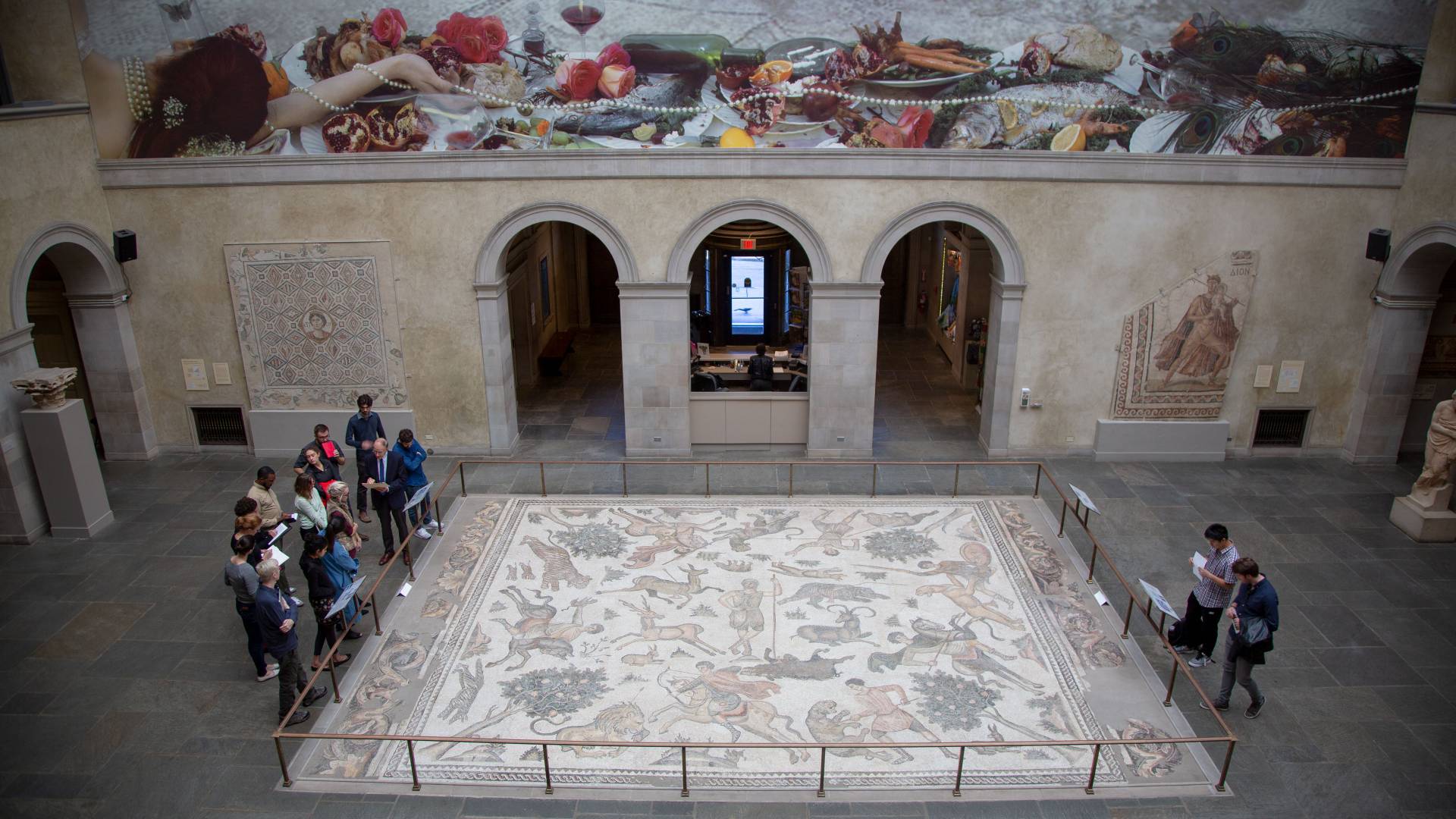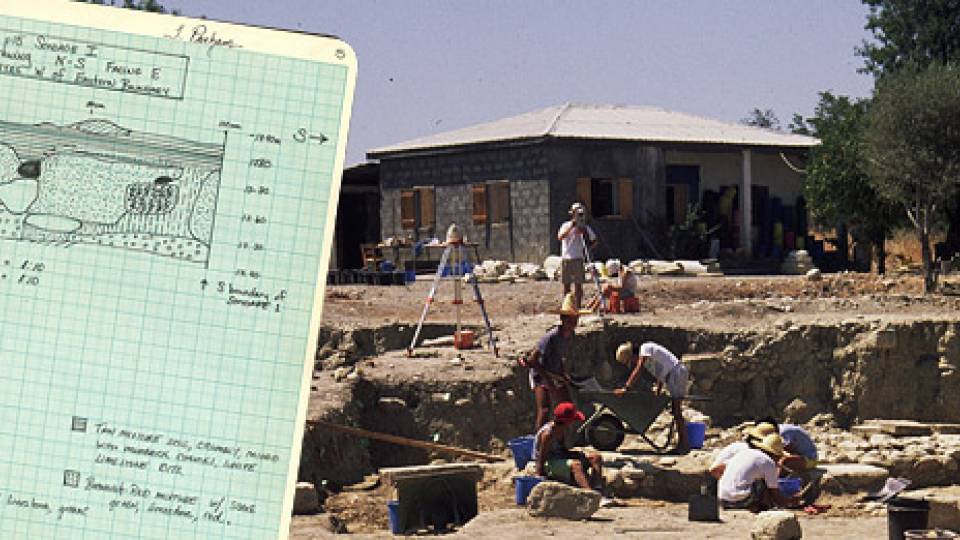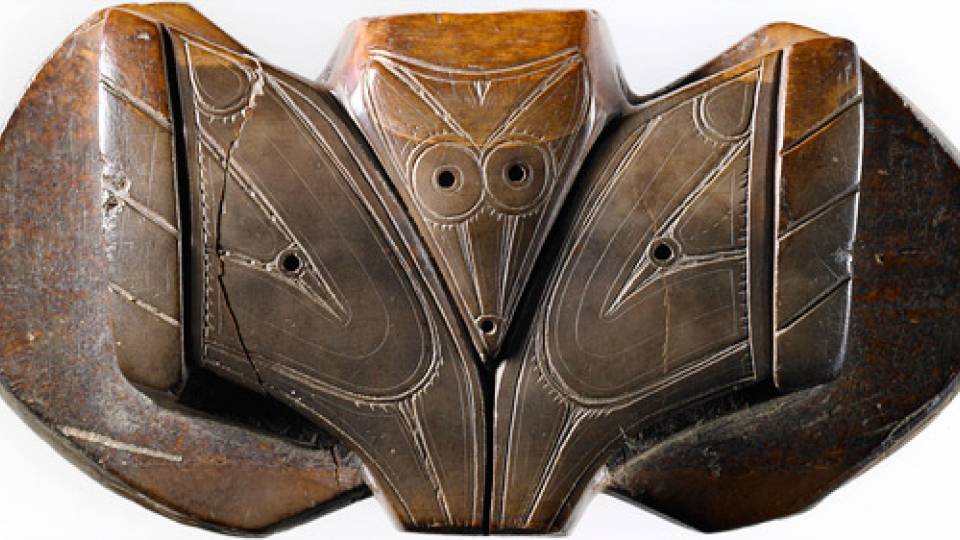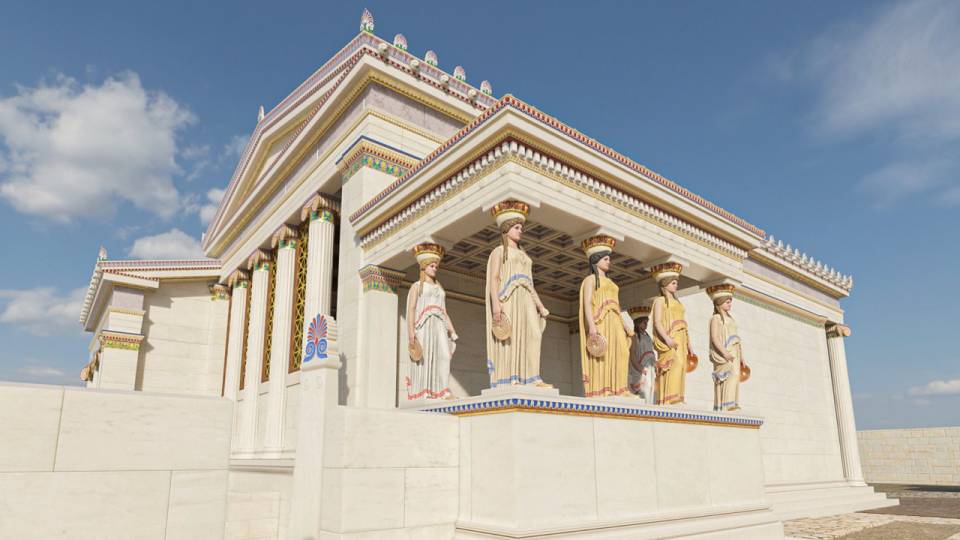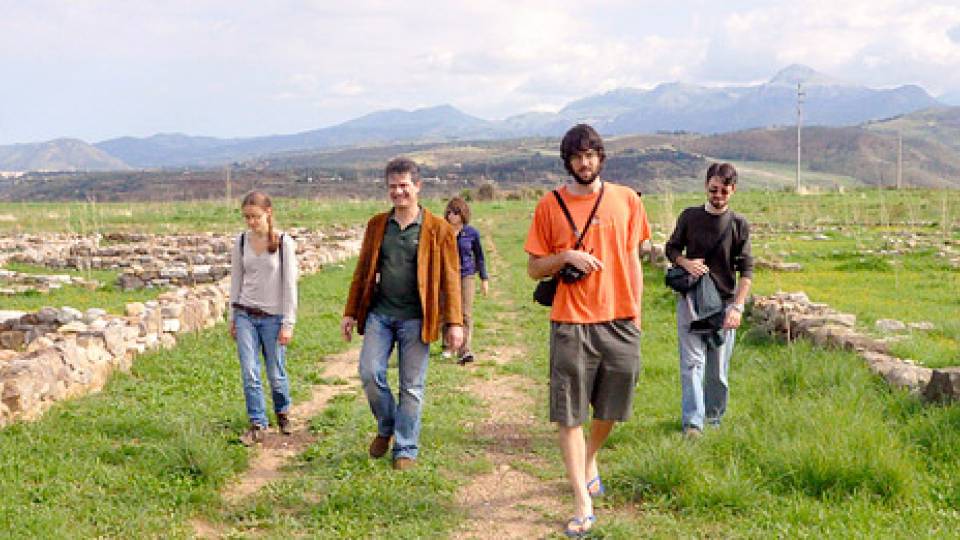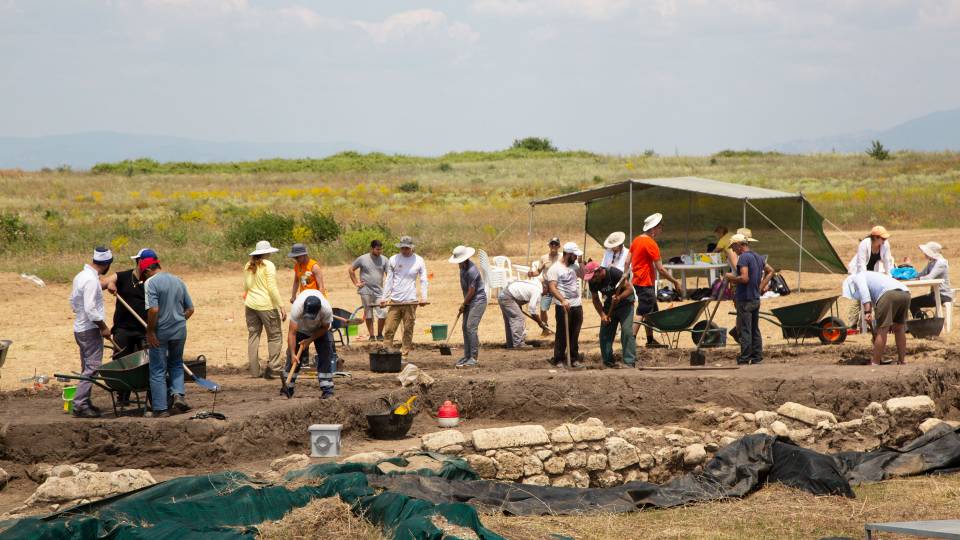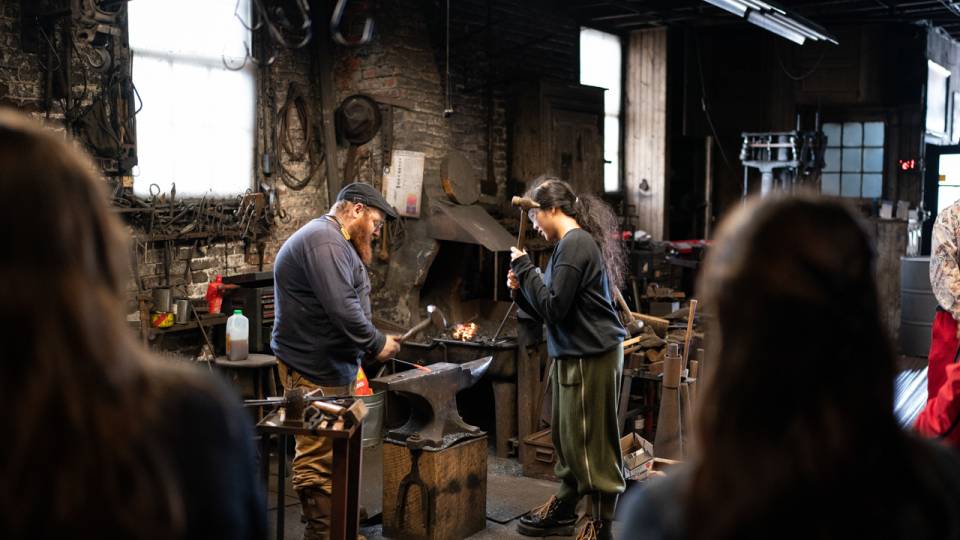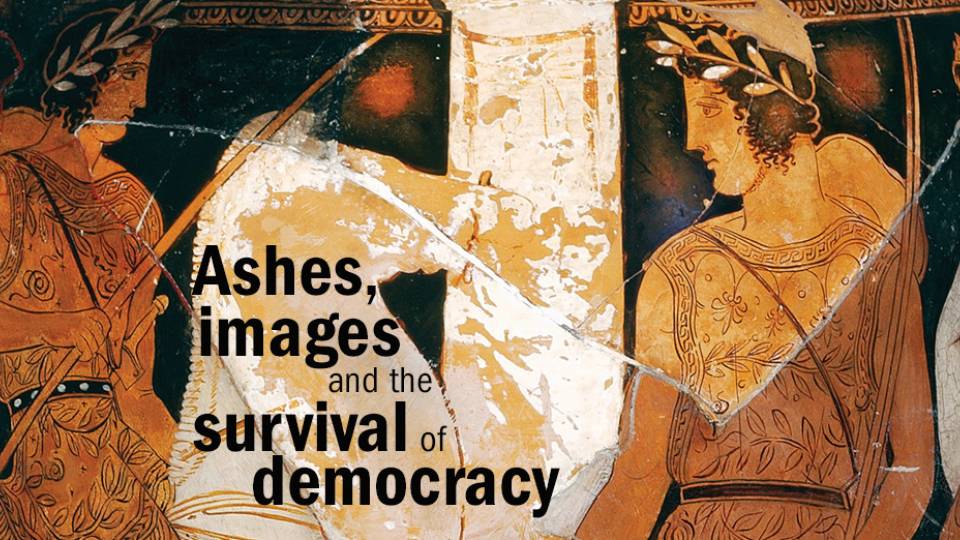Graduate students from Princeton and Harvard view the "Hunting Scene" mosaic in the lobby of the Worcester Art Museum in Massachusetts as part of the seminar "Antioch from the Seleucids to Late Antiquity.” The course is being co-taught this semester by Princeton Professor AnneMarie Luijendijk and Harvard Divinity School Professor Laura Nasrallah.
From 1932 to 1939, a team of archaeologists from Princeton University led an excavation at Antioch, an ancient city located in modern-day Turkey. The expedition uncovered a wealth of objects, ranging from marble statues and mosaics to coins and figurines. This semester, graduate students from Princeton and Harvard are learning about the religious diversity that characterized Antioch through the close study of its artifacts.
The religion and Hellenic studies graduate seminar, “Antioch from the Seleucids to Late Antiquity,” is co-taught by AnneMarie Luijendijk, professor of religion and chair of the Committee for the Study of Late Antiquity, and Laura Nasrallah, professor of New Testament and early Christianity at Harvard Divinity School and a 1991 Princeton alumna.
“I have always been interested in and curious about the Princeton Antioch holdings, as Antioch figures importantly in early Christianity and late antiquity, the period I study,” said Luijendijk. “I emailed my colleague and friend Laura Nasrallah, who is an expert on how to interpret early Christian texts within their material worlds, and asked her to brainstorm a course about Antioch with me; in her reply, she proposed to co-teach — I was immediately enthusiastic!”
The course runs concurrently at Princeton and Harvard, where students meet weekly to consider the social, political, economic and religious life of Antioch depicted by ancient texts — and what the constraints of these texts are, particularly the absence of slaves, women and people of low status.
Throughout the semester, the groups are converging at several institutions along with Princeton and Harvard, including the Dumbarton Oaks Collection in Washington, D.C., and the Worcester Art Museum in Massachusetts, to hear from specialists in Antioch and to study the artifacts in person.
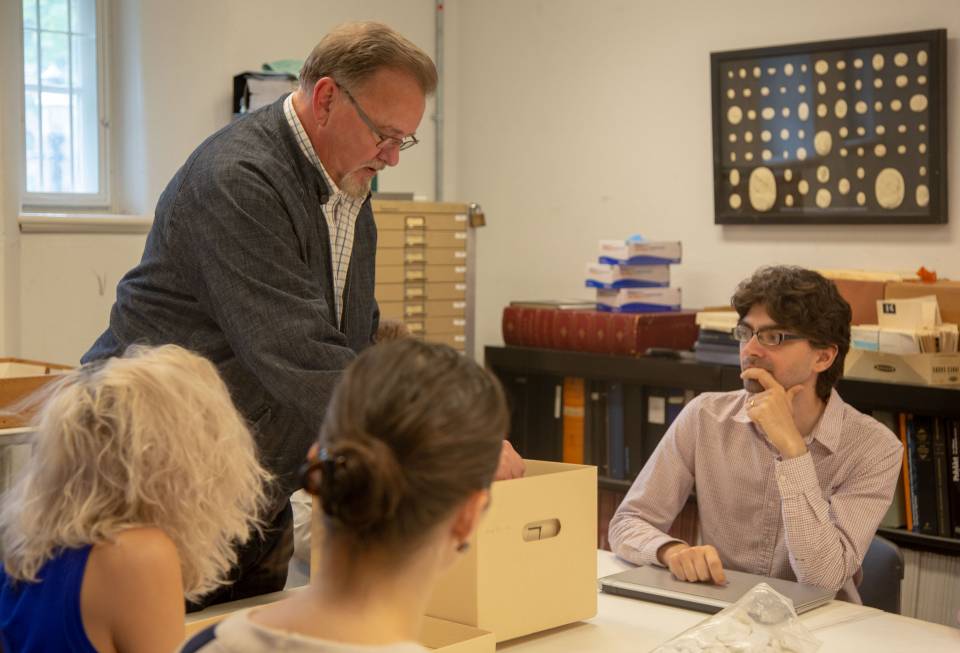
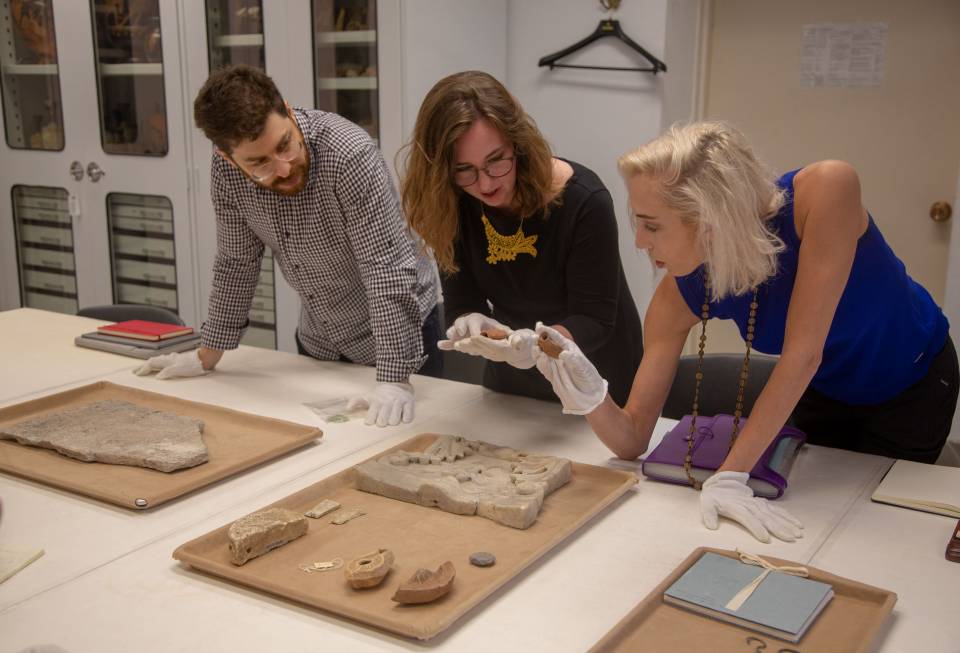
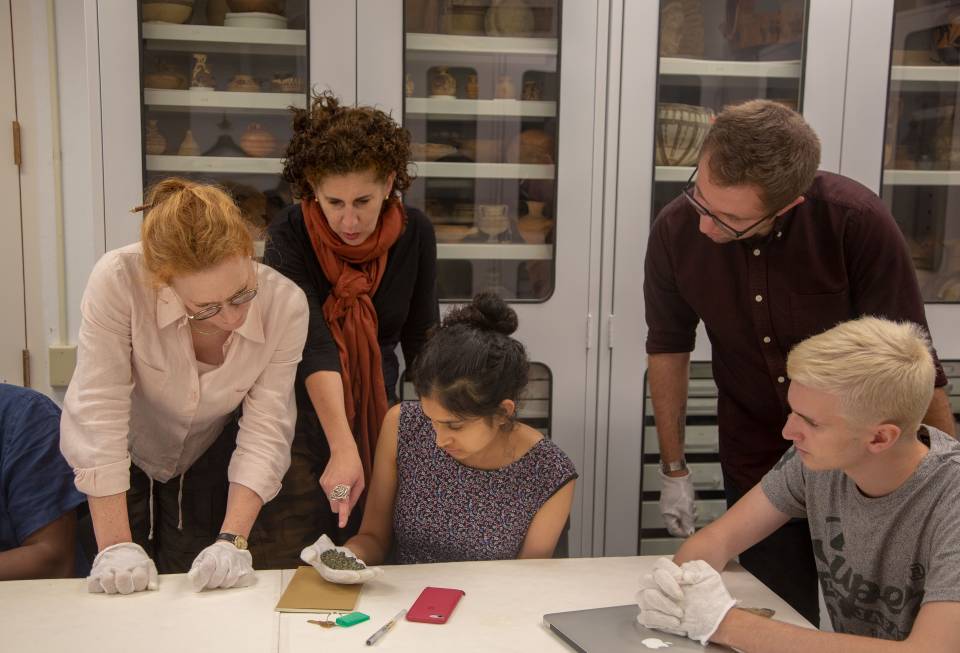
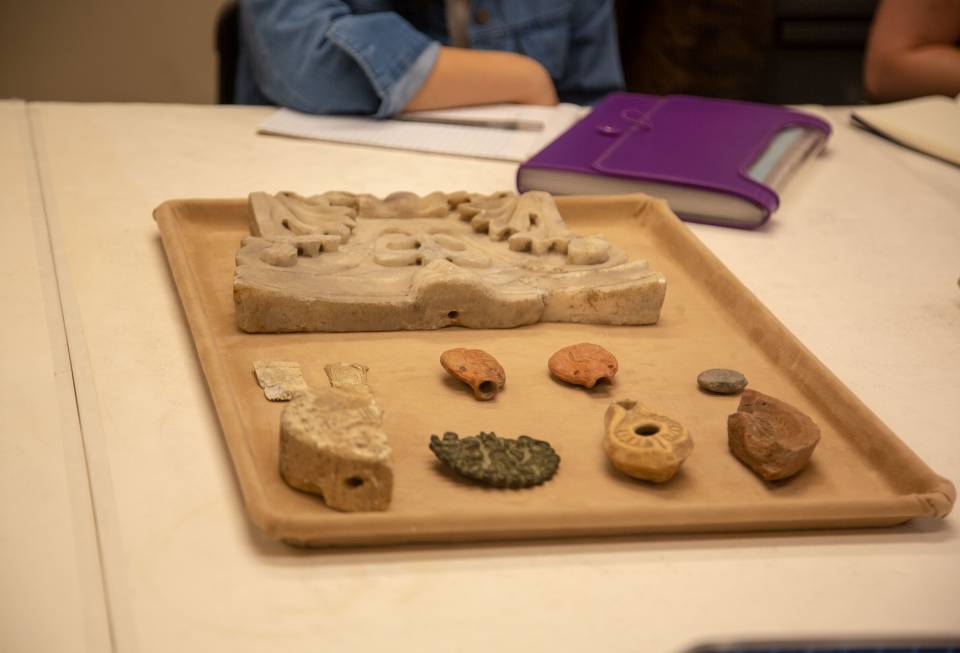
Michael Padgett, curator of ancient art at the Princeton University Art Museum, shows student artifacts from Princeton’s Antioch collection.
From left: Omri Matarasso (Princeton), Sarah Porter (Harvard), and Rebekah Haigh (Princeton) inspect pilgrimage ampullae.
From left: Professor AnneMarie Luijendijk (Princeton) and Professor Laura Nasrallah, Avantika Kumar, Chance Bonar, and John Devoy (all Harvard) discuss an inscribed bronze bread stamp.
A tray of late antique artifacts in Princeton’s collection.
“We can’t just understand antiquity as words on a page. We need to look at the material remains, too,” said Nasrallah. “Both, together, should also wake us up to the lives not only of the rich who commissioned the lavish mosaics of Antioch, but also to those of lower status who supplied the food that would have been eaten in the dining rooms, and especially to the lives of the enslaved who served such food.”
She added, “Bringing archaeological materials together with literary materials helps us to attend to everyday life and to the lives of the less than elite.”
For many students, studying these materials is an opportunity to learn about a period they are interested in from a different perspective.
“Until now, I have focused my research on a rather narrow stratum of Antiochene society, consisting of learned church leaders,” said Omri Matarasso, a graduate student in Princeton’s Department of History. “In the seminar, on the other hand, we work with evidence from which we can learn about Antioch from the perspective of simple believers, Christians and non-Christians alike, and of members of social groups that are rarely represented in the preserved accounts of late antique religious controversies, such as women, slaves and children, or merchants, manual laborers and performance artists.
“The seminar therefore allows me to explore a wide variety of social and cultural aspects relating to Antioch that I never had a chance to examine in my research thus far.”
Rebekah Haigh, a graduate student in Princeton’s Department of Religion, agreed. “My research interests center around the development, transmission and function of texts in the Second Temple Period. I’m also particularly interested in the intersections of early Judaism and Christianity. This course was a perfect opportunity to expand my academic horizons beyond my subfield and text-centered proclivities, while also gaining invaluable research tools and exposure to working with material culture.”
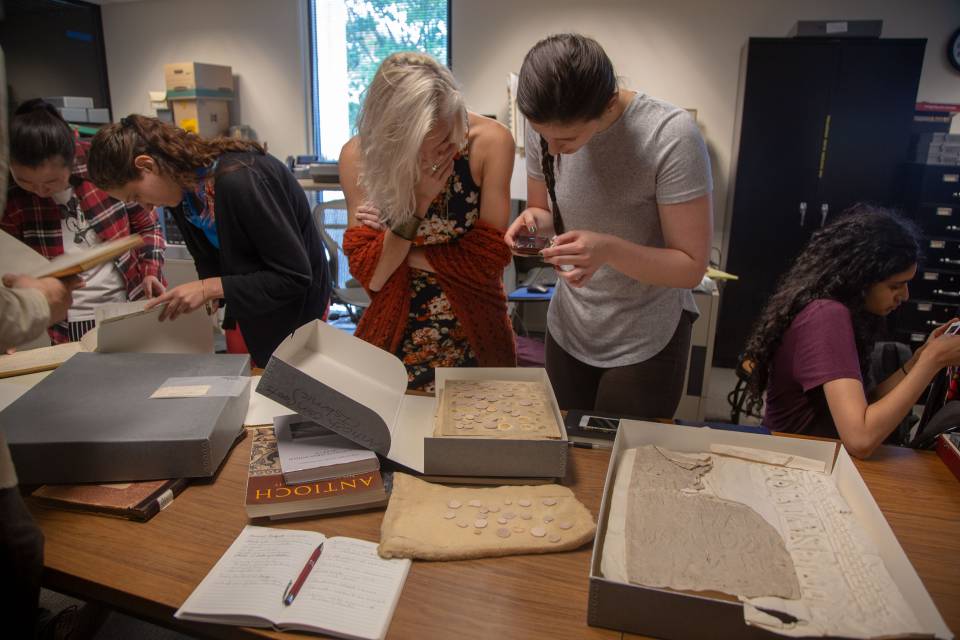
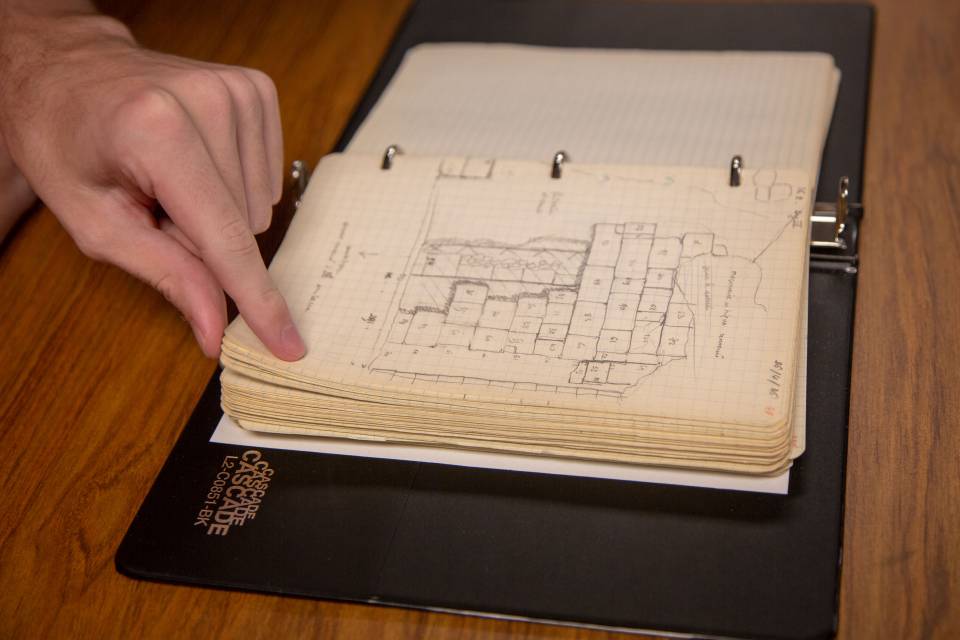
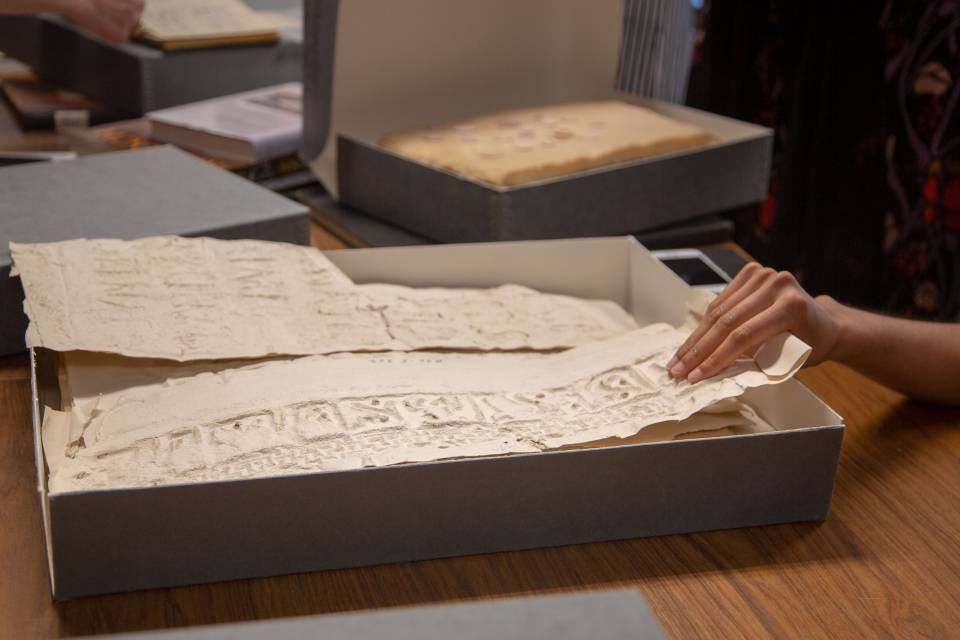
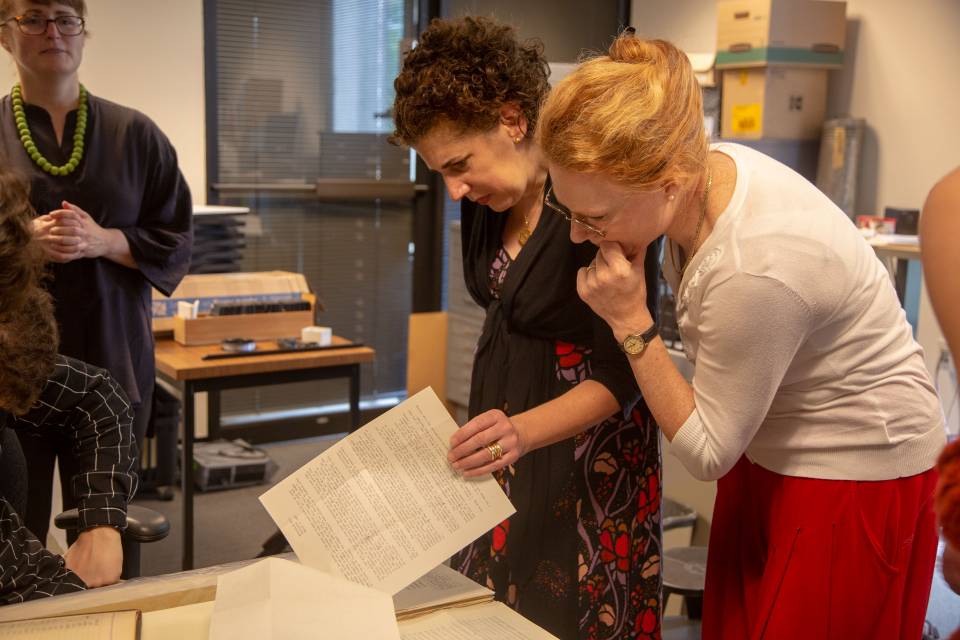
Rebekah Haigh and Alyssa Cady (both Princeton) view replicas of coins in the Department of Art and Archaeology’s archives.
A Princeton archaeologist’s field journal from the Antioch expedition.
A squeeze of an inscription from Antioch.
From left: Julia Gearhart, curator of image and historic collections at Princeton; Laura Nasrallah; and AnneMarie Luijendijk view notes from the expedition.
Princeton and Antioch
When the expedition ended in 1939, Princeton received a portion of the finds, some of which include the Roman mosaic pavements on display in the Princeton University Art Museum, McCormick Hall, Firestone Library and the School of Architecture. Many of the smaller artifacts are housed in the art museum’s collection, which students visited in September. During their visit, they heard from Michael Padgett, curator of ancient art, and got the chance to examine the objects close-up.
The group also met Alan Stahl, curator of numismatics and a lecturer in classics, who discussed the University’s 40,000-coin collection from the Antioch expedition.
The records of the excavations, including the archaeologists’ field books, find cards and photographs, are in the care of the Department of Art and Archaeology. Julia Gearhart, curator of image and historic collections, shared more about these archives and her efforts to digitize them and make them available online.
Antioch artifacts on the East Coast
On their October trip to Cambridge, Massachusetts, students had the chance to see several other institutions’ Antioch collections. Amy Brauer, a curator at the Harvard Art Museum, discussed Harvard's mosaic collections at the museum and its storage facility. The group also saw the Tethys mosaic (pictured below), which is installed in the lobby of Morgan Hall, an administrative building at Harvard Business School.
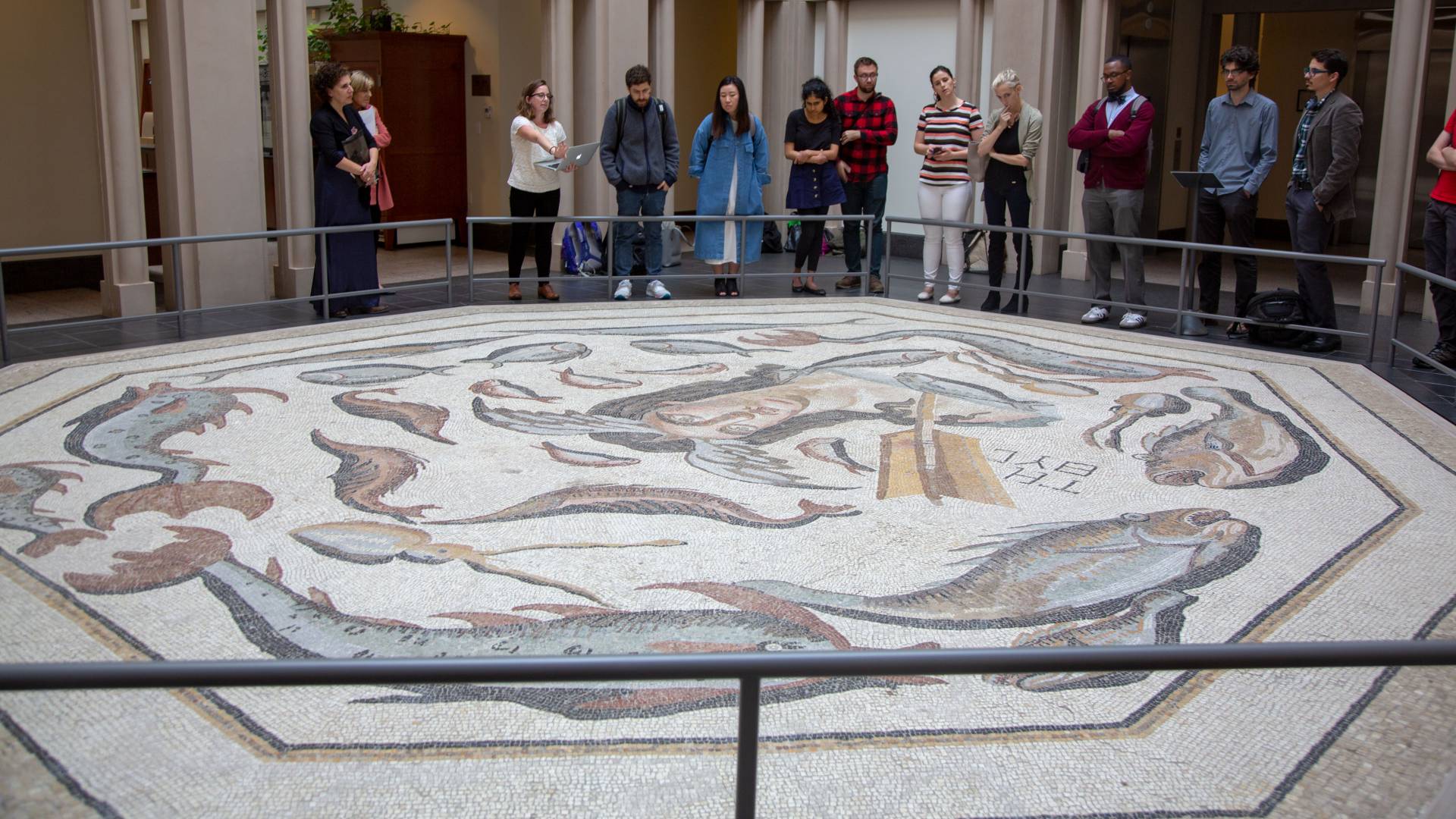
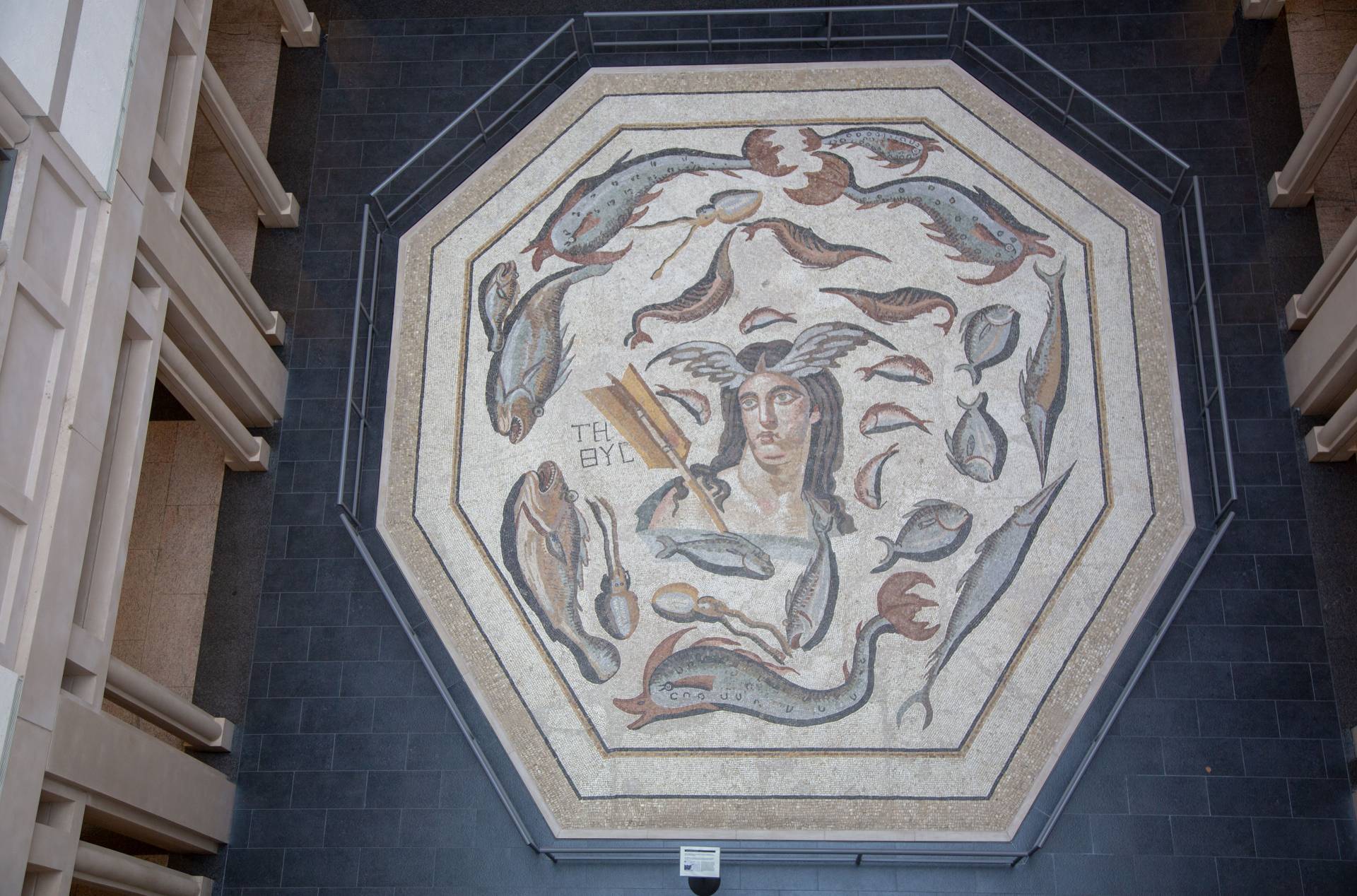
Sarah Porter presents her research on the Tethys mosaic in the lobby of a Harvard Business School administrative building.
An aerial view of the Tethys mosaic. Nearly 21 feet in diameter, the mosaic depicts the sea goddess Tethys, who is surrounded by a variety of multi-colored sea creatures.
Students ventured to the nearby Worcester Art Museum, where they received a tour of the museum’s impressive collection of Antiochian mosaics from James Welu, the museum’s director emeritus.
For the research-oriented course, students each choose an artifact from the collections they visit and write a short paper about it, which includes a bibliography and questions for further research. While they are on site, the students give mini-presentations about the objects to their peers.
“My favorite thing about this course has been the chance to dive deep with various material artifacts, literally getting a feel for the sensory possibilities these objects might have had,” said Haigh.
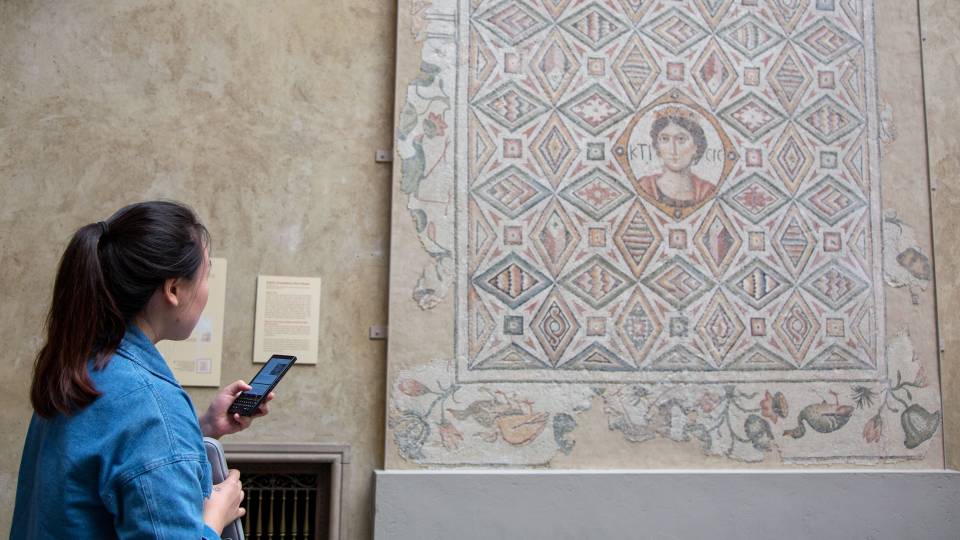
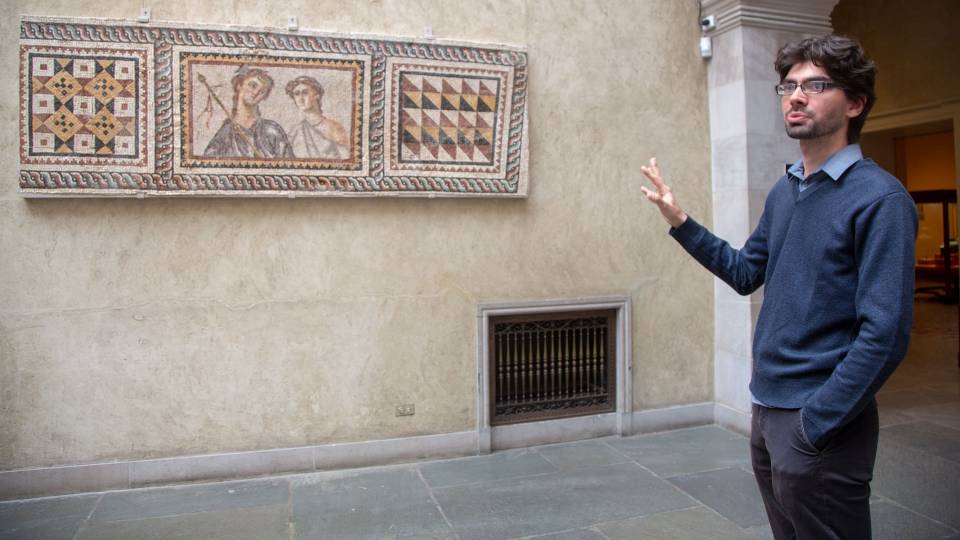
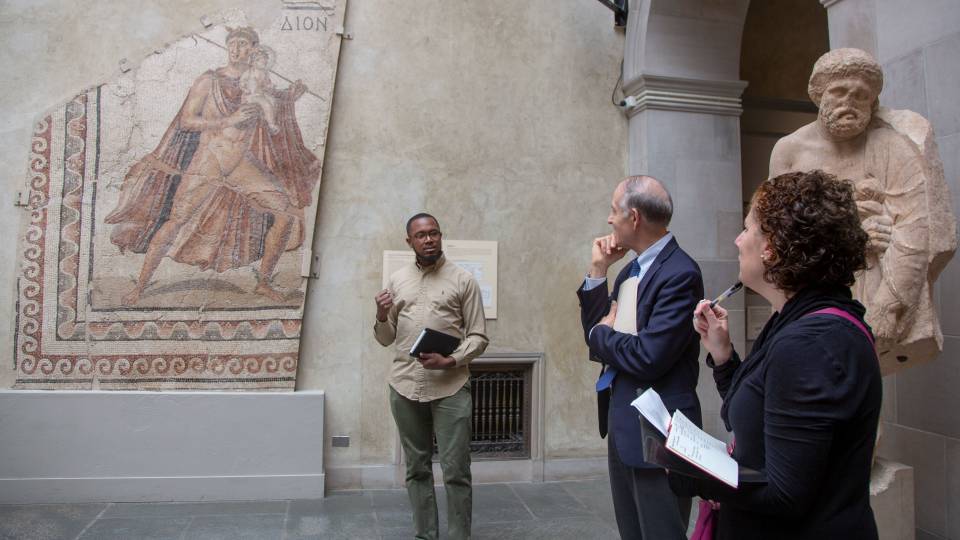
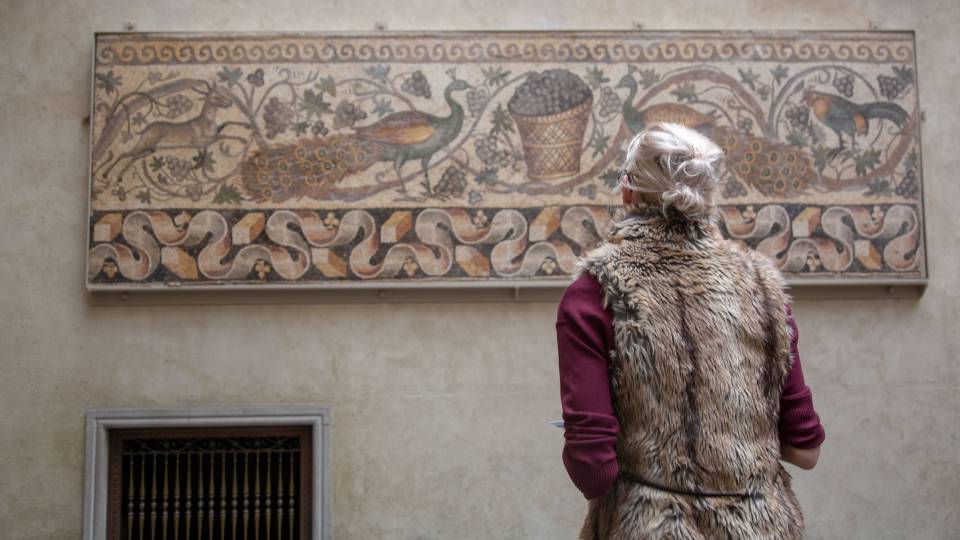
Heelee Joo (Princeton Theological Seminary) gives a presentation on “Ktisis Floor Mosaic” at the Worcester Art Museum.
Djair Filho (Princeton) describes the “Dionysos and Ariadne” mosaic.
Jeremy Williams (Harvard) discusses “Hermes and Dionysos Floor Mosaic” with James Welu, director emeritus of the Worcester Art Museum, and Nasrallah.
Rebekah Haigh (Princeton) views “Mosaic of a Vine Scroll Border with Peacocks.”
Before the end of the semester, the group will visit Dumbarton Oaks and will present their final projects on campus at Princeton.
"I find it important that our graduate students are well versed in the study of texts but also in the material world of these texts,” said Luijendijk. “I hope that by introducing graduate students early in their careers to these materials, they can work with them for a long time. There is so much still to research and discover about Antioch!”
“Antioch from the Seleucids to Late Antiquity” is a project funded by the David A. Gardner ’69 Magic Project Grants under the auspices of the Humanities Council.
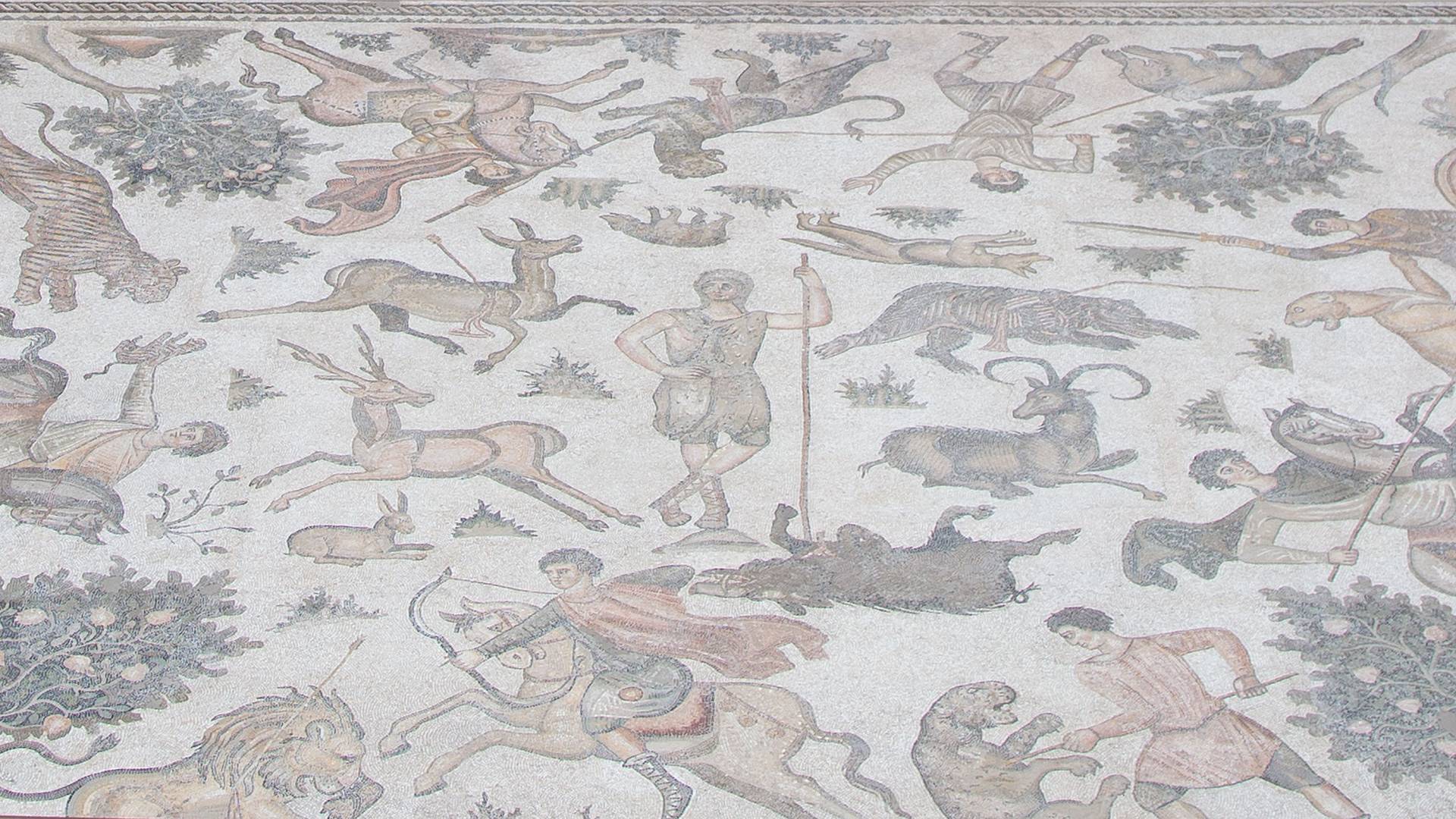
Close-up of the "Hunting Mosaic" at the Worcester Museum of Art
